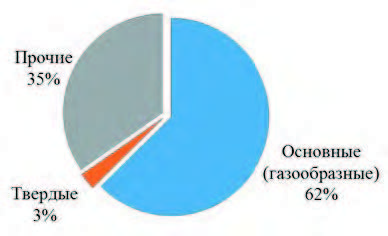Artificial neural networks for calculation of microparticle concentrations (PM2.5 and PM10) in atmospheric air based on the results of measurement of the total amount of suspended particles (on the example of Kazan)
Keywords:
computational monitoring, air pollution, dust, РМ2.5, РМ10, neural networkAbstract
Presence of microparticles PM2.5 and PM10 in atmospheric air is dangerous for human health. At the same time, concentrations of these particles are often not found in the list of components measured at air quality control stations. The results of designing artificial neural networks for the calculation of PM2.5 and PM10 concentrations are presented in the articlebased on the results of measuring the total number of suspended particles and a set of meteorological parameters.
References
Ведение системы расчетного мониторинга за состоянием атмосферного воздуха для выявления источников загрязнения, деятельность которых является причиной повышенной загазованности атмосферного воздуха в г. Казани. Отчет по государственному контракту № 17 МЭ-15с от 30.06.2017. Казань: ИПЭН АН РТ, 2017. 351 с.
Информационный бюллетень «Воздействие взвешенных частиц на здоровье. Значение для разработки политики в странах Восточной Европы, Кавказа и Центральной Азии». Европейское региональное бюро Всемирной организации здравоохранения. ВОЗ, 2013. 20 с.
Ломтев А.Ю., Мозжухина Н.А., Карелин А.О., Мельцер А.В., Еремин Г.Б., Никонов В.А. Методические вопросы контроля РМ частиц в селитебной зоне и на границе сани- тарно-защитной зоны // Материалы пленума научного совета РФ по экологии человека и гигиене окружающей среды «Методологические проблемы изучения, оценки и регламентирования химического загрязнения окружающей среды и его влияние на здоровье населения». М., 2015. С. 238-240.
Май И.В., Макс А.А., Загороднов С.Ю., Чигвинцев В.М. Методические подходы к учёту скорости оседания различных пылевых фракций для задач оценки экспозиции населения мелкодисперсными частицами // Известия Самарского научного центра РАН. 2012. Т. 14, №5(3). С. 792-795.
Методическое пособие по расчету, нормированию и контролю выбросов загрязняющих веществ в атмосферный воздух (дополненное и переработанное). СПб: ОАО «НИИ Атмосфера», 2012. 224 с.
Неменко Б.А., Илиясова А.Д., Сыздыков Д.М. Методы определения взвешенных аэрозолей в атмосферном воздухе // Вестник КазНМУ. 2014. № 2(2). С. 488-490.
Организация мониторинга загрязнения атмосферного воздуха мелкодисперсными частицами: Методические указания. М.: Федеральный центр гигиены и эпидемиологии Роспотребнадзора, 2009. 5 с.
Рапопорт О.А., Копылов И.Д., Рудой Г.Н. К вопросу о нормировании выбросов мелкодисперсных частиц // Экологический вестник России. 2012. № 4. С. 56-61.
РД 52.04.830–2015. Массовая концентрация взвешенных частиц РМ10 и РМ2.5 в атмосферном воздухе. Методика измерений гравиметрическим методом. СПб: ГГО им. А.И. Воейкова, 2015. 41 с.
Acosta J.A., Faz A., Kalbitz K., Jansen B., Martinez-Martinez S. Heavy metal concentrations in particle size fractions from street dust of Murcia (Spain) as the basis for risk assessment // J. Environ. Monit. 2011. V. 13. Р. 3087-3096.
Balakrishnan K., Ganguli B., Ghosh S., Sankar S., Thanasekaraan V., Rayudu V.N, Caussy H. Part 1. Short-term effects of air pollution on mortality: results from a time-series analysis in Chennai, India // Res. Rep. Health. Eff. Inst. 2011. V. 157. Р. 7-44.
Health risk of particulate matter from long-range transboundary air pollution-Joint WHO/UNECE Convention Task Force on the Health Aspects of Air Pollution. World Health Organisation. European Centre for Environment and Health, 2006. 100р.
Health relevance of particulate matter from various sources. World Health Organization. European Centre for Environment and Health, 2007. 21 р.
Zender C., Bian H., Newman D., Mineral Dust Entrainmentand Deposition (DEAD) model: Description and 1990s dust climatology // J. Geophys. Res. 2003. V. 108. Р. 4416-4437.

Downloads
Published
How to Cite
Issue
Section
License

This work is licensed under a Creative Commons Attribution-NonCommercial 4.0 International License.




